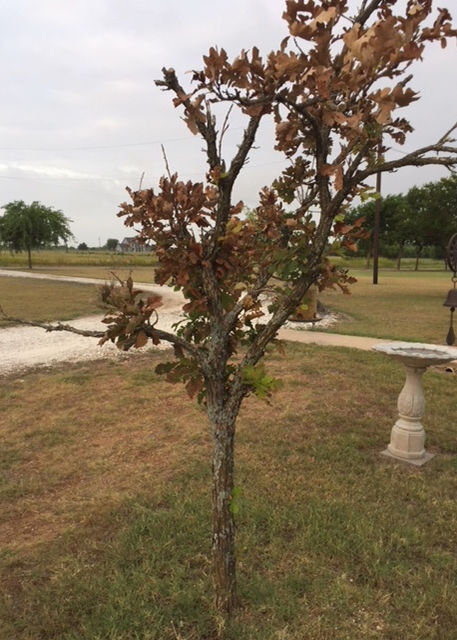Dear Neil: I live in an area where centipede grass grows fairly well. I was tired of my old lawn that was overrun with weeds, so I applied a grasskiller to get a fresh start.
I waited two weeks, raked up as much of the dead grass and weeds as I could and then planted my centipede seeds.
It is growing, but now I still have a lot of weeds, and I have two types of grass.
What did I do wrong?
Answer: There are several possibilities.
You didn’t mention which grasskiller you used.
Glyphosate sprays kill grasses very efficiently, so that would have been the best choice. But it would need to have been a glyphosate-only product (no other active ingredients). It would have needed at least the full two weeks to kill weedy grasses with large roots (dallisgrass, Johnsongrass, etc.), and it might not have killed all broadleafed weeds. For them you might have needed to include a 2,4-D type of herbicide in addition to the glyphosate. It doesn’t sound like you rototilled and raked out the roots of the old weeds and grasses after you sprayed.
That’s a must any time that you’re starting new grass, especially from seed.
So the problem is in there somewhere. I have to let you do the searching for it.
Dear Neil: I have a magnolia tree in our backyard. It’s one of four of about the same age. The other three are thriving, but this one looks like it’s dying in spite of water and fertilizer. What can I do to spur it along?
Answer: From your thumbnail photo, you’re right: It doesn’t look like it has much vigor.
It looks like it either got way too dry at some point years back and has never recovered, or perhaps it’s in too much shade.
The other, larger trees appear to be fairly close and they may be starving it for light. It might be time to change out to a shade-loving tree such as a redbud or Mexican plum, or if you’re in an area with acidic soil, Japanese maple or dogwood.
Dear Neil: We have a very aggressive weed that sprouts up with a single blade with a thin, white root.
Then it turns into a plant with several leaves and a swollen base.
What will kill it? The things I tried did not. (See sample enclosed.)
Answer: Your sample was flattened while it was in the mail.
I believe you have the common weed nutsedge.
Your description fits it perfectly. Dig up one plant and roll its stem between your thumb and index finger. If it’s triangular, then it’s nutsedge. The original Image product or a newer material called Sedgehammer will both control nutsedge when used according to label directions. This is prime time to use them.
Dear Neil: I set a trap to capture an armadillo that has ravaged our flowerbeds and yard. I baited it with sardines and peanut butter.
It ate right up to the trap, then went around it and kept on eating.
What other tricks can I try?
Answer: We live in a rural area, and we are also blessed with armadillos.
In our 42 years of co-existing alongside them, we’ve trapped more than 70 of them in humane traps. Some of those are raccoon traps I’ve bought in farm shops, but most are wooden traps I’ve built from a pattern given to me decades ago.
The real secret beyond what you did is to find where their tunnels are, then put the traps on their pathways to the tunnels. Put chicken wire alongside it to create a funnel of sorts to channel the animals into the traps. It’s a lot faster than waiting on them just to stumble into the traps randomly.
Dear Neil: Some 20 years ago I planted two Shumard red oaks about 4 feet from the corners of our house.
I see no issues with our foundation, but I’m wondering if I should have the trees taken out. They’re beautiful, and I know now that I made a mistake. It may not be in my lifetime, but I hate to think of losing them. They shade the house greatly.
What would you do?
Answer: I have a pecan in that same situation.
Our builder poured our foundation 18 inches closer to the trunk than he was supposed to. Now, 41 years later, the tree is massive. I have my tree service look at it annually. I hire an award-winning arborist, and I try always to have the same man watching it for the sake of continuity. We have dug down around the crown to check on roots that might do damage to the slab. So far so good. I wouldn’t rush to remove either one of them until you’re sure that you have to.
Dear Neil: We have an oak that is looking worse and worse. Is it possible to save it? It gets full sun.
Answer: This poor tree is really weak and I doubt if you’ll be able to turn it around.
I see bark shedding off the major branches, and it appears there is decay within those branches.
I suspect it suffered transplant shock or drought damage after it was planted, but whatever hurt it is in the past and the tree is suffering the aftermath at this point.
I’d suggest starting with a new tree that you know is healthy and vigorous this fall. Plant it carefully at the same depth at which it had been growing in the nursery and care for it regularly to help it get established. Even if this one were to recover, it would take years.
Credit: www.news-journal.com

